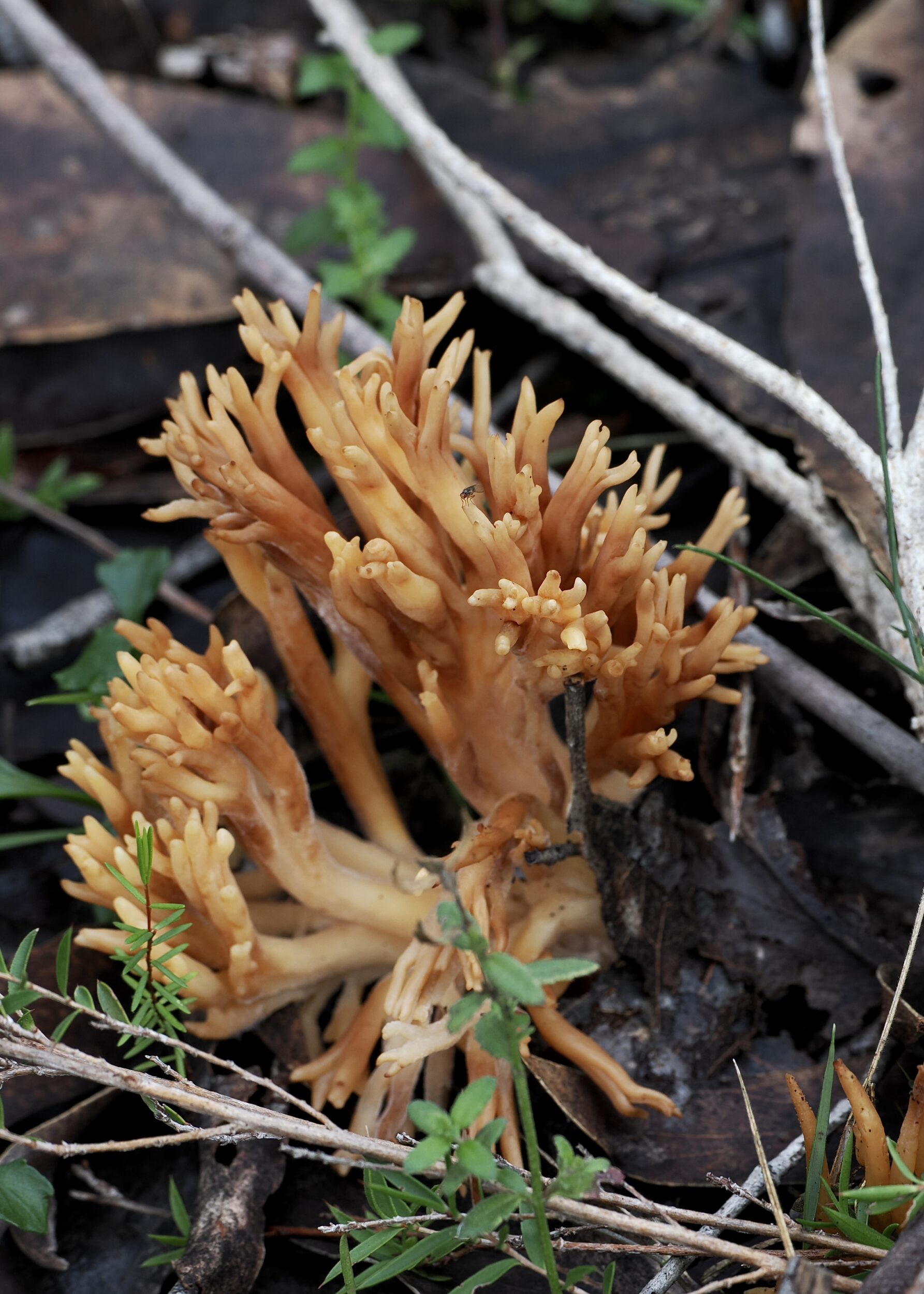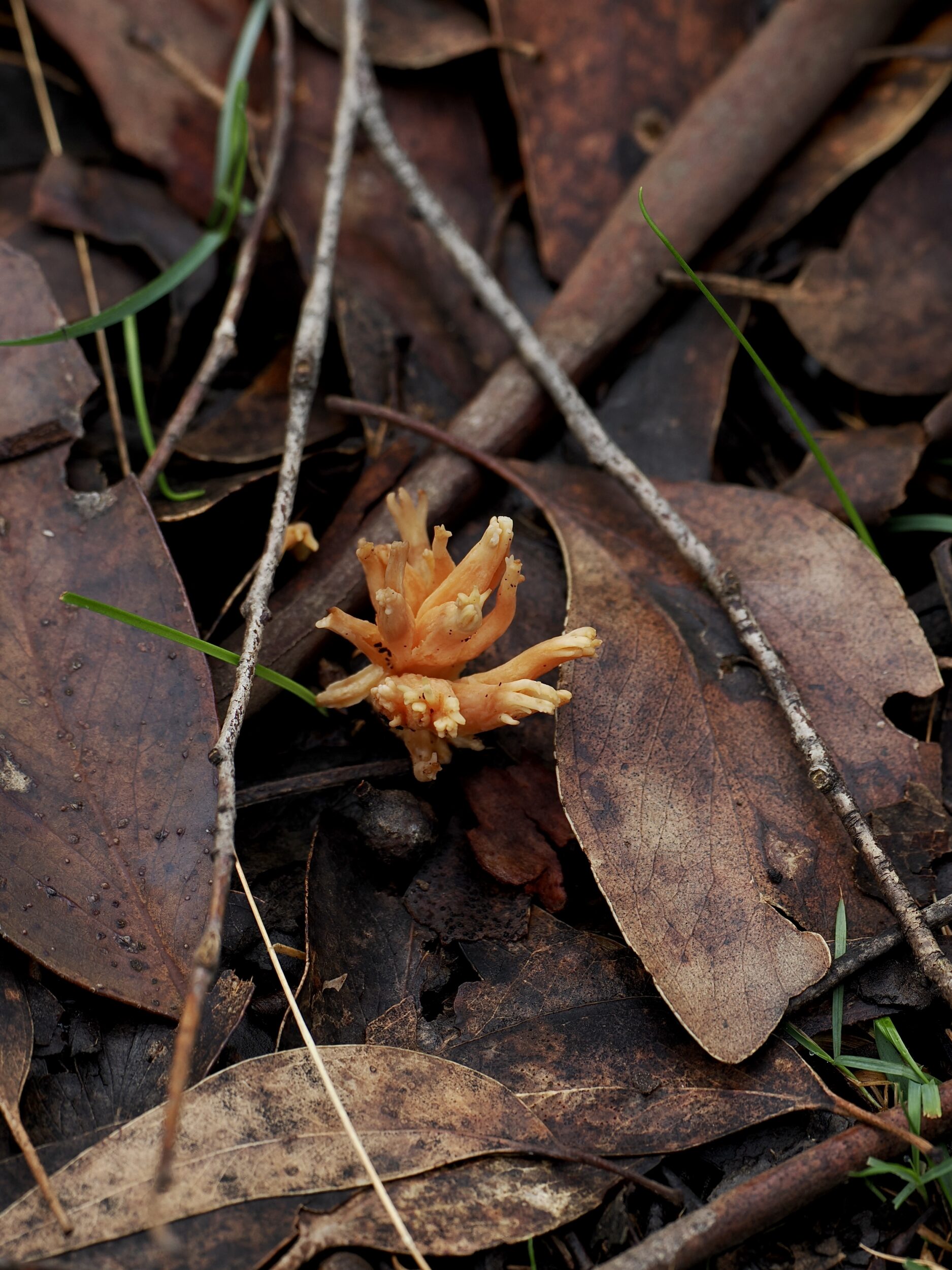…but this post’s petite fruiting bodies are definitely fungal “fruit”.
I think they are examples of so-called “coral fungi”, as were many of the more weird and wonderful fungi we saw in Deep Creek National Park’s old-growth stringybark forest, on an easy, leisurely 75 minute walk.
Coral fungi are so-named because of their appearance.
The many and varied “coral” species are not necessarily each others’ close relatives, let alone members of the same genus.

If you look carefully, you should be able to see a gnat in the “coral”; like “coral” as an adjective applied to some fungi, “gnat” is a very loose term.
Usually, “gnats” are small, non-biting flies; some of them are “fungus gnats”.
Fungus gnats’ diet includes fungi; gardeners are generally more bothered by these gnats than are fungi.
Click here to see Pat and Ed Grey’s “A Little Book of Corals”; it deals only with Australia’s geographically smallest mainland state, but shows a spectacularly diverse array.
So too did “our” modest-sized forest at the bottom of South Australia’s Fleurieu Peninsula.
